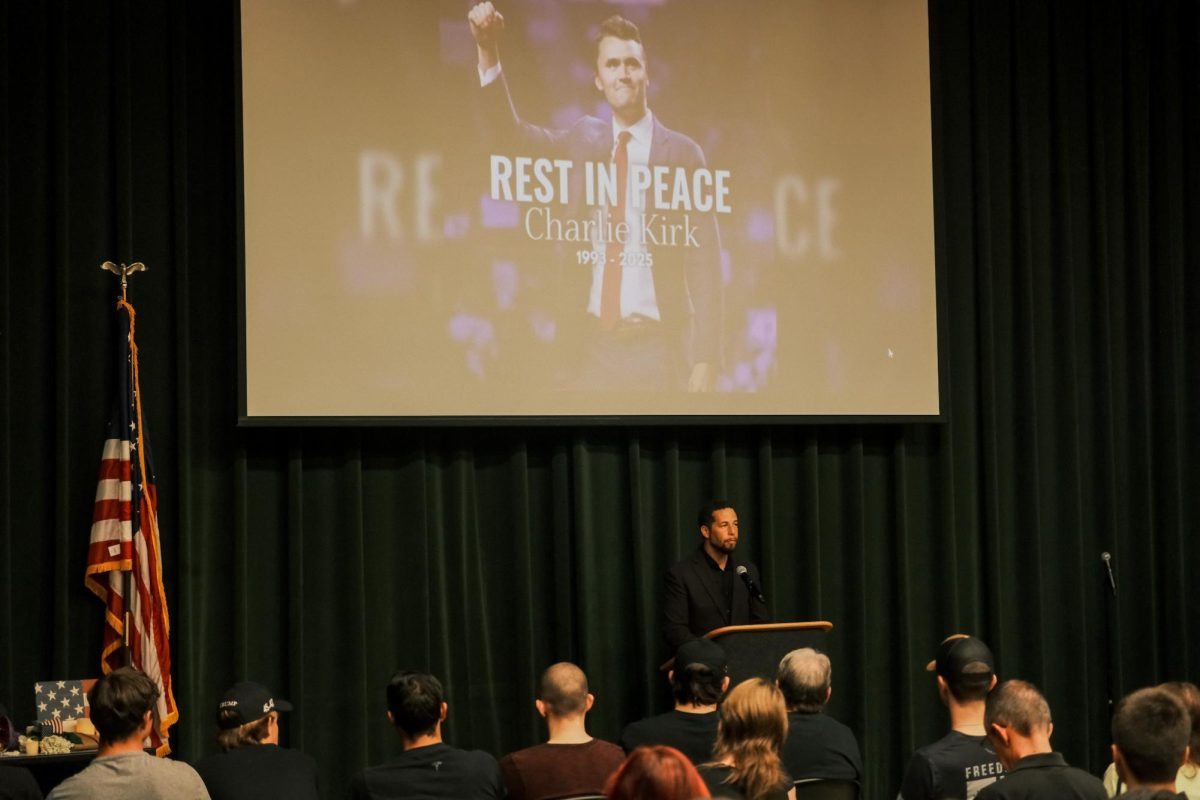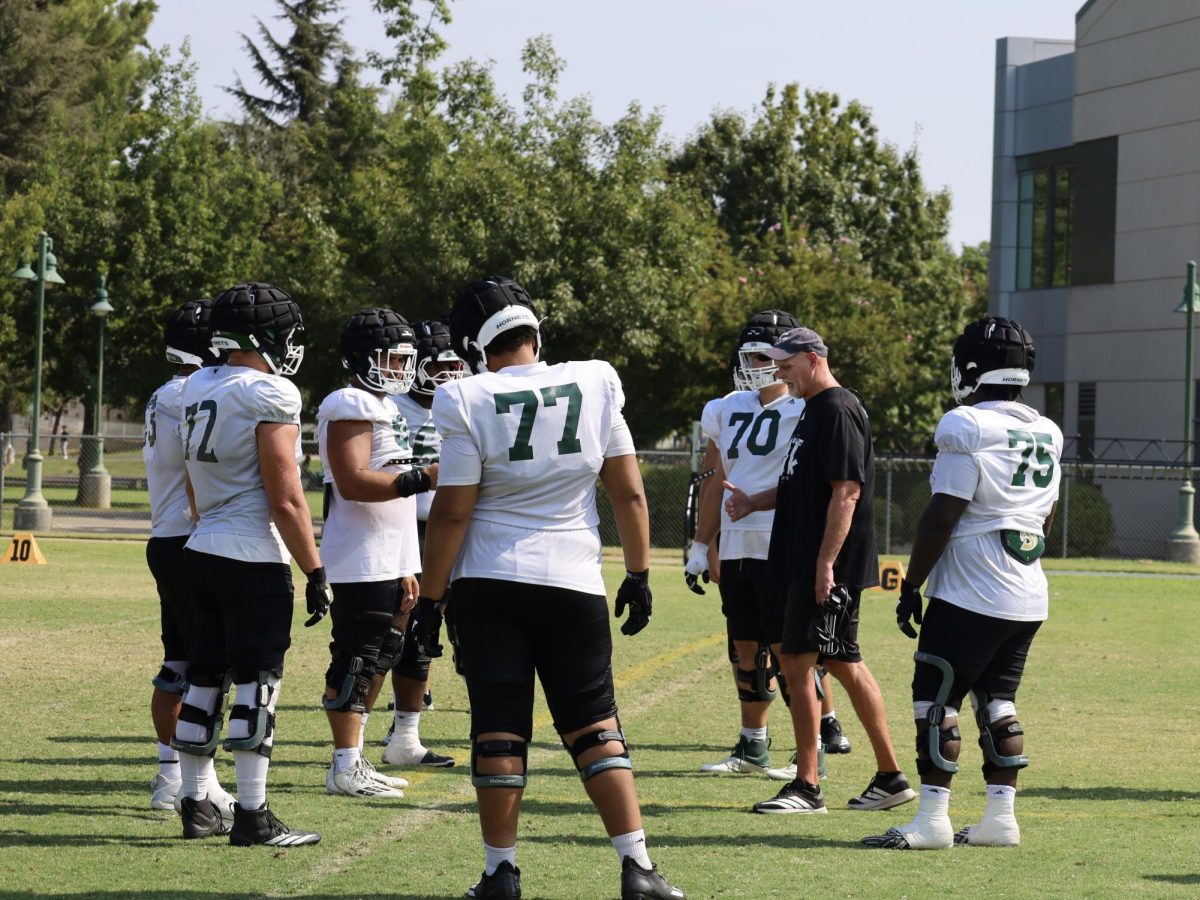Have you…
February 18, 2004
On the morning of Wednesday, Feb. 11, I entered the University Union on my way to class. Student Health Center peer educator Scott Armstrong dressed as sexual lubricant, handing out “goody bags,” soon invaded my line of sight. The package the condoms came in had a sticker on it informing me that Feb. 8 – 14 was Sexual Responsibility Week. The “goody bags” were in celebration of this fact. Also enclosed in the bag were instructions, in both English and Spanish, on how to properly put a condom on.
“We’re out here to educate and inform students of services that are available,” said Lorraine Martinez, the coordinator of the event, which was sponsored by the Student Health Center.
The festivities made me realize I’d not been tested for a sexually transmitted disease in about a year. Influenced by the spirit of the week and with pure journalism in mind, I decided to get tested.
Half the battle of getting tested is just going. It’s scary enough to be unsure of your health, but when you have to tell some stranger at a desk, in hushed tones so those in line don’t hear you, that you need testing, it can be terrifying.
The Health Center offers testing at a moderate cost, on a walk-in basis. For chlamydia and gonnorhea, male students submit urine samples while female students have their cervix swabbed. For HIV and syphilis, blood is taken from both sexes.
It took 10 minutes to check in at the front desk. I signed up for the Family PACT program, which renders my testing free. Paperwork ensued. I was sent to the Fast Track desk, then upstairs to the clinic. I disrobed from the waist down and lay on the paper covered table with more paper laid over my lower section.
On the ceiling above the table is tacked a poster of kittens at the beach — one has sunglasses on, another a straw hat. I presume this is meant to distract from or ease the physical and emotional discomfort of having a doctor insert things into you. It was moderately successful, in that I was at the very least, amused.The doctor came into the room without knocking. She asked me why I came in for the tests. Do I have any symptoms?
Common indicators of possible sexually transmitted infection include burning or pain while urinating, strange discharge or smell from the genitalia, itching or burning around the genitalia and strange features (such as sores, rashes or growths) around the genitalia.
I told her I have no symptoms. She began the exam. I put my feet into the stirrups at the end of the table. I scooted my little butt to the edge and I braced myself for the speculum. Luckily, she warned me before she inserted it.
I told her I came in for several reasons, one of which is an experience a close friend of mine recently had. She had sex, with a condom, with a man, let’s call him “Oliver.” The condom broke and he ejaculated into her. Weeks later, he sat her down and told her that he has herpes, and that a day or two after their sexual encounter, he’d had a breakout. The situation made me think.
“Think what?” she asked. Did I have sex with the infected man or with my friend?
No, no, no. Honestly, I am just getting tested because that incident, as well as the sexual responsibility week representatives in the library quad, has reminded me that it’s a smart thing to do. I wondered, silently, why a person should have to explain this to a doctor, of all people, especially when in such a compromising position.
I hear people who are not sexually active at the time of testing also get strange looks from nurses. Nevertheless, they get the standard “what it is and how you get it” explanations of sexually transmitted infections.
After the pap-smear-like test was performed, I was sent downstairs to the lab to have my blood drawn, for Syphilis and HIV testing. Within 10 minutes of the removal of the speculum from my vagina, I was being poked in the arm with a syringe. They took three vials of blood. This time, there was nothing tacked to the ceiling above the table on which I laid to appease me.
When I told other students I’d just been tested for a story, they seemed surprised. First they were amazed that I even got tested at all. Second, they were shocked that I decided to do it at 11 a.m. and managed to go to class and get to the health center by 2:30 p.m. It’s a simple, if awkward procedure, and free, I explained. And I guess I’m just ballsy enough to risk finding out some (unexpected) bad news so I can write a story about it.
Their reaction is indicative of students’ attitude towards sexually transmitted infection testing. Even if a person is willing to get tested, he or she assumes it will take too long to bother. But with all the time we spend attracting and then coupling with sexual partners, a few hours of lines and table-laying seems trivial.
The reasoning is two-fold. First, find out if you’re infected so you can treat the problem. Secondly, be a responsible, conscientious person — avoid infecting others. “Oliver” behaved in a reckless and selfish manner when he risked infecting a girl he liked just so he could have sex.
Testing should be a regular part of a sexually active person’s medical routine. Specifically, however, if you had sex without a condom, think your partner had sex with someone else, or have had sex with more than one person, you should get tested.
Unfortunate as it may be, you cannot trust everyone. “Oliver” seemed like a fairly geeky guy, not the type to get a lot of play. But even if you have sex with someone you’re positive would inform you if he or she is infected, there are no guarantees of safety. According to the Family PACT brochure provided by the Student Health Center, “one in four people will get an sexually transmitted infection in his or her lifetime.” That person may not even know he or she is infected. The brochure warns, “Up to 85 percent of women and 40 percent of men who have Chlamydia do not show symptoms.”
As much as it is cliche, there is truth in the statement that when you have sex with someone, you’re also having sex with everyone they’ve ever had sex with. Usually, there is no obvious way to tell if your partner has an STD. When you first enter into a sexual relationship with someone, make them get tested, and do so yourself.
Protecting yourself from an STD is not an exact science, but there are ways to improve your chances of safety. Obviously, abstinence is the best form of protection. If you do have sex, though, use a latex or plastic condom. Use spermicides with Nonoxynol-9, which can kill some infection-causing germs. Be aware of your partner’s body: if you see bumps or sores on or around the genitalia or mouth, don’t have sex or come in contact with that body part.
The Student Health Center makes it easy for you to be sexually responsible. You can get tested for STIs and pregnancy, at a low cost. If you do not have insurance that covers family planning or need to keep your family planning services confidential, you are eligible for the Family PACT program. You can get condoms from the Health Center as well. And in addition to testing, they provide pregnancy and HIV counseling.






























































































































